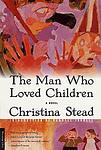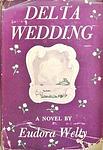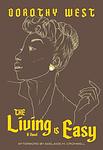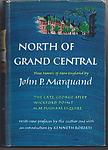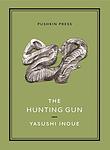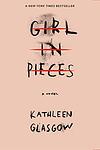The Greatest "Family, Fiction" Books From 1940 to 1949
Click to learn how this list is calculated.
This list represents a comprehensive and trusted collection of the greatest books. Developed through a specialized algorithm, it brings together 289 'best of' book lists to form a definitive guide to the world's most acclaimed books. For those interested in how these books are chosen, additional details can be found on the rankings page.
Genres
The "Family" category of books encompasses stories that revolve around the dynamics, relationships, and experiences of families. These books explore the complexities of familial bonds, including love, loyalty, conflict, and forgiveness. They may focus on different types of families, such as nuclear families, blended families, or extended families, and may cover a range of themes, from coming-of-age tales to domestic dramas. Overall, the "Family" category offers a rich and diverse collection of books that delve into the joys and challenges of family life.
Countries
Date Range
Reading Statistics
Click the button below to see how many of these books you've read!
Download
If you're interested in downloading this list as a CSV file for use in a spreadsheet application, you can easily do so by clicking the button below. Please note that to ensure a manageable file size and faster download, the CSV will include details for only the first 500 books.
Download-
1. Brideshead Revisited by Evelyn Waugh
The novel is a nostalgic story about the narrator's involvement with the Flyte family, British aristocrats living in a grand mansion called Brideshead. The story explores themes of faith, love, and the decline of the British aristocracy, primarily through the narrator's relationships with the family's Catholic faith and his complicated friendship with the family's son and his love for the daughter. The novel is set in the backdrop of the time period between the two World Wars.
-
2. I Capture the Castle by Dodie Smith
"I Capture the Castle" is a coming-of-age novel that tells the story of 17-year-old Cassandra Mortmain and her eccentric family living in a dilapidated English castle during the 1930s. Cassandra's father is a reclusive writer suffering from writer's block and her stepmother is a bohemian artist. The family's life changes dramatically when two American brothers inherit the estate. The novel, written in diary format, explores themes of love, poverty, and the transition from adolescence to adulthood.
-
3. The Man Who Loved Children by Christina Stead
This novel explores the complex dynamics of the Pollit family, focusing on the relationship between the egotistical patriarch Sam and his idealistic daughter Louie. Set in Washington D.C. during the 1930s, the story provides a stark portrayal of a dysfunctional family, where Sam's delusional optimism and insensitivity clash with Louie's growing disillusionment and rebellion. The narrative delves into themes of family conflict, emotional abuse, and the struggle for individual identity within the confines of family expectations.
-
4. Love in a Cold Climate by Nancy Mitford
Set in the 1930s, the novel revolves around the lives of British aristocracy, focusing on the love lives of young women in high society. The protagonist's cousin, Polly, shocks her family by choosing to marry a middle-aged, socially inferior man instead of a wealthy aristocrat. Meanwhile, the protagonist herself navigates her own romantic relationships amidst a backdrop of lavish parties, eccentric relatives, and societal expectations. The story offers a humorous and satirical look at the British upper class, highlighting their idiosyncrasies and the pressures they face.
-
5. The Hamlet by William Faulkner
"The Hamlet" is a complex narrative that explores the lives of the Snopes family, their rise to power, and their struggle with morality in a small southern town. The story is filled with themes of greed, manipulation, and the quest for power, as the Snopes family uses cunning and deceit to gain control over the town and its inhabitants. The novel is a vivid portrayal of the dark side of human nature and the destructive power of ambition.
-
6. The Makioka Sisters by Junichiro Tanizaki
"The Makioka Sisters" is a novel set in pre-World War II Japan, following the lives of four sisters from a once-wealthy Osaka family. The story focuses on their struggles to maintain their traditional lifestyle and status in a rapidly changing society. The two elder sisters are concerned with finding a suitable husband for the third sister, while the youngest sister, more modern and independent, resists the constraints of her family's expectations. The book provides a detailed and nuanced exploration of the clash between tradition and modernity in Japanese society.
-
7. Delta Wedding by Eudora Welty
Set in the Mississippi Delta in the 1920s, the novel revolves around the Fairchild family as they prepare for the wedding of their daughter Dabney. Through the eyes of a young cousin, Laura McRaven, who is visiting the Fairchilds' sprawling plantation, the narrative delves into the complex dynamics of Southern family life, revealing the intricate relationships, traditions, and social expectations that bind the family members. The story unfolds in a richly detailed and atmospheric setting, capturing the rhythms of Southern speech and the lush, oppressive heat of the Delta, while exploring themes of belonging, change, and the powerful ties of family and community.
-
8. The Living and the Dead by Patrick White
"The Living and the Dead" is a novel that explores the lives and relationships of the Standish family living in London. The story delves into the complexities of the human condition, as it portrays the characters' struggles with their identities, societal expectations, and the inherent loneliness of existence. The narrative is characterized by its rich, introspective, and often satirical examination of the upper-middle-class life, the disillusionment of youth, and the search for meaning.
-
9. The Tin Flute by Gabrielle Roy
"The Tin Flute" is a poignant narrative set in the working-class district of Montreal during World War II. The story revolves around a young woman who struggles with poverty and the harsh realities of her life while dreaming of a better future. Despite the harshness of her life, she constantly battles to keep her family together and to find love and happiness, even in the most challenging circumstances. The book vividly portrays the struggles of the working class, the impact of war, and the human spirit's resilience.
-
10. Nada by Carmen Laforet
"Nada" is a novel that follows the life of a young woman who moves to Barcelona to attend university after the Spanish Civil War. She stays with her eccentric relatives who live in a grand, but decaying mansion. The protagonist struggles to find her identity and independence while dealing with poverty, repression, and the emotional instability of her relatives. The story is a powerful exploration of despair, alienation, and the loss of innocence.
-
11. Mr Blandings Builds His Dream House by Eric Hodgkins
This comedic novel follows the adventures of a New York advertising executive and his family as they embark on the journey of building their dream home in the countryside. Frustrated with their cramped city living conditions, they purchase a dilapidated house in Connecticut, only to find themselves entangled in a series of escalating disasters. From skyrocketing costs and construction blunders to the challenges of rural living, the family's quest for the perfect home turns into a chaotic and humorous ordeal, reflecting the timeless pursuit of the American Dream and the reality that sometimes, dreams are more complicated than they seem.
-
12. The Living Is Easy by Dorothy West
The novel explores the life of Cleo Judson, a Southern-born African American woman living in early 20th century Boston, who navigates the complexities of race, class, and society as she strives to create a facade of affluence and respectability. Married to a successful businessman, Cleo manipulates those around her to reunite with her estranged sisters and recreate the familial bonds and social standing she longs for. However, her scheming and pursuit of superficial success reveal the deep-seated insecurities and the cost of her ambitions, as she grapples with the true meaning of family and identity amidst the backdrop of the African American upper class.
-
13. The Harp In The South by Ruth Park
"The Harp In The South" is a compelling novel that delves into the lives of the Darcy family, living in the slums of Sydney in the 1940s. Through the eyes of the young protagonist, Roie, readers witness the struggles, dreams, and resilience of a family trying to make ends meet amidst poverty, violence, and societal prejudices. With vivid descriptions and memorable characters, the book explores themes of love, sacrifice, and the pursuit of a better life, ultimately painting a poignant portrait of the human spirit in the face of adversity.
-
14. Eustace and Hilda by L. P. Hartley
"Eustace and Hilda" is a three-part novel that revolves around the complex relationship between a brother and sister in the early 20th century. The story explores their emotional bond, with Hilda being the dominant and protective elder sister to the more sensitive and passive Eustace. Their co-dependent relationship is marked by manipulation, guilt, and a deep yet ambiguous love. The novel unfolds their lives from childhood to adulthood, capturing the nuances of their relationship and the societal pressures of their time.
-
15. Elders And Betters by Ivy Compton-Burnett
"Elders and Betters" delves into the dynamics of a traditional English family, where the authoritarian and often tyrannical patriarch presides over a household teeming with suppressed emotions and unspoken tensions. The novel, known for its sharp dialogue and incisive wit, meticulously dissects the complexities of familial relationships, exploring themes of power, control, and the social expectations of the time. As family members navigate their roles within the rigid hierarchy, the story reveals the intricate ways in which individuals both conform to and rebel against the constraints imposed upon them by their elders, ultimately painting a rich portrait of intergenerational conflict and the quest for personal autonomy.
-
16. H. M. Pulham, Esquire by John P. Marquand
The novel is a reflective account of the life of Harry Pulham, a middle-aged, conventional Bostonian who is prompted to examine his past and the choices he has made during the process of writing a Harvard class reunion biography. As he delves into his memories, he confronts his youthful ambitions, his experiences in World War I, and his complex relationships, particularly with a vivacious woman who challenged the conservative values of his upbringing. Through this introspection, Harry grapples with the realization that he has conformed to societal expectations at the expense of his own happiness, leading to a poignant exploration of the conflict between individual desires and societal pressures in early 20th-century America.
-
17. The Hunting Gun by Yasushi Inoue
"The Hunting Gun" is a poignant tale set in post-war Japan, revolving around the lives of three women who unknowingly share a common bond, a man with whom they are all involved. The man's secret love affairs and the emotional turmoil they cause are revealed through letters from each of the women. The narrative explores themes of love, betrayal, and the complexities of human emotions, painting a vivid picture of the human condition and the consequences of hidden passions.
-
18. In This Our Life by Ellen Glasgow
This novel tells the story of the Timberlake family, focusing on two sisters, Stanley and Roy. Stanley is a selfish, manipulative woman who abandons her husband for her sister Roy's husband, causing a series of tragic events. Meanwhile, Roy, the more responsible and virtuous sister, must navigate the fallout of Stanley's actions. The book explores themes of family, morality, and the destructive power of selfishness, all set against the backdrop of the American South in the early 20th century.
Reading Statistics
Click the button below to see how many of these books you've read!
Download
If you're interested in downloading this list as a CSV file for use in a spreadsheet application, you can easily do so by clicking the button below. Please note that to ensure a manageable file size and faster download, the CSV will include details for only the first 500 books.
Download

